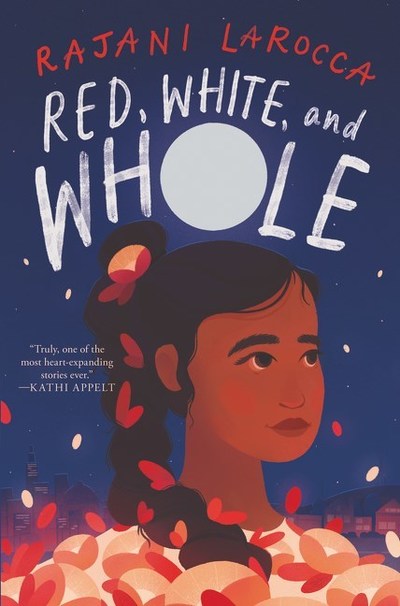Reha, an Indian American girl, narrates Rajani LaRocca’s Red, White, and Whole in first-person free verse as she navigates what she describes as “two lives. / One that is Indian, / one that is not.”
It’s 1983 and Reha, an only child, is in middle school. The differences between her two cultures—the American culture she experiences at school and the Indian culture that surrounds her at home—make her feel like she’s being pulled in opposite directions with more force than ever. But Reha adores her parents and doesn’t want to disappoint them. She studies hard and tries not to complain about feeling different. She intends to be a doctor when she grows up, even though she is afraid of blood.
When her mother, Amma, gets sick with leukemia, Reha begins to feel guilty about her secret desire to not be so different from her classmates. She bargains with God and tries to be perfect so that her mother will get better.
The poems in Red, White, and Whole are vibrant and lyrical, clear and smooth. In her first novel in verse, LaRocca (Midsummer’s Mayhem) showcases the best of what verse can do, telling a story that is spare, direct and true, every word and idea placed with intentional care. Reha’s narration shines with honest emotion, and its tenderness calls out to readers and invites them to feel what she feels at every turn.
LaRocca brilliantly incorporates references to 1980s American pop culture and traditional Indian culture. Despite how difficult it is for Reha to feel like she fully belongs anywhere, she is richer because of her access to multiple sources of wisdom and stronger because she has learned to navigate a variety of cultural norms. Reha’s friendship with Rachel, whose Jewish faith plays a similar role in her life, is a smart parallel.
Packed with evocative details of tween life in the ’80s, Red, White, and Whole is a sensitive coming-of-age story with all the makings of a new middle grade classic.




